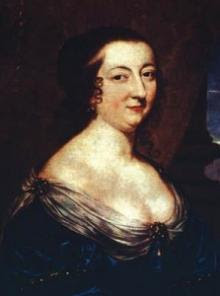Discovering the Phantom's Origins in a Virtual Vacation
Sooooo… that vacation. Yep, off the books due to Covid. I hate that. We love to travel and like to get away and see something new every few moths or so. In the meantime, I'm discovering some cool ways to explore the world.
Phantom phans, this one is for you. BATB fans, the Phantom is a creepy cousin to the Beauty & the Beast tale. Well, both are rather creepy. Beauties and beasts, in their own fashion, so we're going with it.
The Palais Garnier in Paris and Google Arts & Culture partnered to bring us a virtual tour of the Palais Garnier. Woot! There are views of the lake under the Palais, views of lovely Paris from the rooftop, the Library-Museum and the theater itself where you can see the fresco ceiling and famed chandelier. They also include pictures of the artwork and statues that adorn the Palais, inside and out. Every nook and cranny has a sculpture or painting to discover.
The Wikipedia site on Palais Garnier includes a fun illustration indicating the placement of each of the statuary on the front of the building, along with a good history lesson.
Yes, very cool, buy why do we care to see such extravagant opulence? The Palais was inspiration for the fabulous Phantom of the Opera. Gaston Leroux was a French journalist and opera critic, so he was very familiar with the Palais. In the article, "Unmasking the Parisian Phantom of the Opera," Messy Nessy Chic provides an intriguing look into Palais Garnier and the inspirations that Leroux drew upon for his book. Check it out, it's pretty neat. Discover the lake and underground tunnels to the architect named Eric who may or may not have lived underneath the building to the inspiration for the young Christine Daaé.
A few other favorite views:
Check out these fairy tale settings:
Castles of Loire, France
Gardens of Castle of Bouges
Where do you wish you could travel?
Phantom phans, this one is for you. BATB fans, the Phantom is a creepy cousin to the Beauty & the Beast tale. Well, both are rather creepy. Beauties and beasts, in their own fashion, so we're going with it.
The Palais Garnier in Paris and Google Arts & Culture partnered to bring us a virtual tour of the Palais Garnier. Woot! There are views of the lake under the Palais, views of lovely Paris from the rooftop, the Library-Museum and the theater itself where you can see the fresco ceiling and famed chandelier. They also include pictures of the artwork and statues that adorn the Palais, inside and out. Every nook and cranny has a sculpture or painting to discover.
The Wikipedia site on Palais Garnier includes a fun illustration indicating the placement of each of the statuary on the front of the building, along with a good history lesson.
Yes, very cool, buy why do we care to see such extravagant opulence? The Palais was inspiration for the fabulous Phantom of the Opera. Gaston Leroux was a French journalist and opera critic, so he was very familiar with the Palais. In the article, "Unmasking the Parisian Phantom of the Opera," Messy Nessy Chic provides an intriguing look into Palais Garnier and the inspirations that Leroux drew upon for his book. Check it out, it's pretty neat. Discover the lake and underground tunnels to the architect named Eric who may or may not have lived underneath the building to the inspiration for the young Christine Daaé.
 |
| Paris from the rooftop of Palais Garnier |
We visited Paris October 2019, and Palais Garnier was one of my favorite stops. It's at the Place de l'Opera in the 9th arrondissement. Charles Garnier was the architect, and he designed and built the Palais at the request of Emperor Napoleon III (who apparently never attended an opera there - how tragic.) in the 19th century in the Napoleanic style, which means it makes use of all the gaudy styles from the past several centuries. It's a gilded, velveted, iron-worked, sculpted, extravagant and cryptic kind of place. The Grand Salon rivals Versailles and I can see how the Paris Opera Library-Museum would be swoon worthy for opera fans with five rooms full of opera scripts, costumes, drawings and more. In retrospect, I wished we'd taken a tour to hear the interesting tidbits and to see the lake and behind the scenes views. It was wonderful, nonetheless.
A few other favorite views:
Is there a place you've been dying to visit? I bet there's a virtual view! I'm enjoying Google Arts & Culture. There's much to explore.
Check out these fairy tale settings:
Castles of Loire, France
Gardens of Castle of Bouges
Where do you wish you could travel?





Comments
Post a Comment